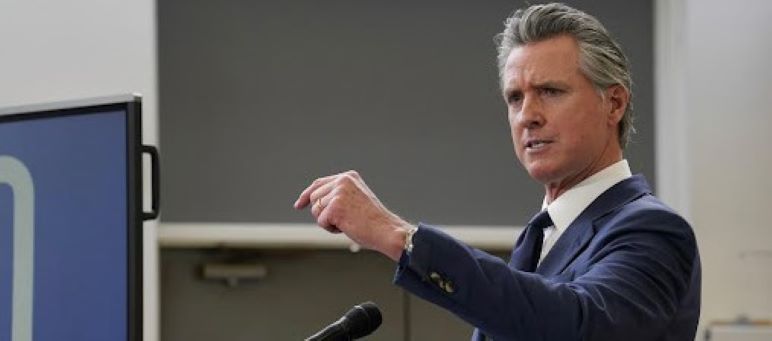No deficits. A “modest” surplus. Almost $17 billion more in revenue than planned.
Gov. Gavin Newsom’s office is scheduled to formally lay out its vision today for how California should spend its considerable bounty, a total budget of $322 billion — projected to be the second largest state spending plan ever.
In a preview of his proposal, Newsom told reporters Monday that the state budget’s main tranche of cash, the general fund, will rise to $229 billion in 2025-26. That’s about $10 billion more than what his office and lawmakers predicted last June and roughly $17 billion more than what’s in this year’s budget.
The fiscal outlook is far rosier than the pall that hung over California last year when lawmakers and the governor scrambled to plug a more than $46 billion budget hole. In June, they struck a deal to cut $16 billion in spending, delay another $3 billion in funding for various services and draw a total $12 billion from the state’s rainy day fund for two fiscal years.
“Last year, we endeavored to make this year’s budget a non-event,” Newsom said during a Monday press conference.
While much of this budget plan will change before it’s finalized between Legislature and the governor by late June, the January budget is often seen as an opening statement of fiscal values and a political starting point for negotiations between Newsom and the leadership in the Senate and Assembly.
Even with a projected revenue increase, Newsom acknowledged Monday that California’s fiscal outlook is still uncertain, in part due to the state’s brewing conflicts with the incoming administration of president-elect Donald Trump.
Trump has repeatedly threatened to withhold federal disaster aid from California, which is facing one of its most destructive wildfires this week. While outgoing President Joe Biden has approved Newsom’s request for a major disaster declaration — allowing the state to tap into federal funding and assistance programs — the state could still need more federal disaster funding under Trump’s administration. In October, Newsom told Politico he planned to establish a state fund for disaster relief in case Trump does withhold federal funds.
The economic impact of the ongoing Los Angeles-area fires alone is estimated to be at least $135 billion, increasing its earlier estimate of around $50 billion. That’s based on damage caused to homes, cars, businesses and lost economic activity, said Dan DePodwin, senior director of forecasting operations at AccuWeather. A spokesperson for the Governor’s Office of Emergency Services said it’s too soon to calculate the cost of the fires to the state.
Additionally, state lawmakers are planning to spend more money on “Trump-proofing” California, including $25 million to the Attorney General’s office for legal expenses.
Newsom’s budget proposal includes $17 billion in reserves. But, he cautioned, the state may decide to set aside more money because of the economic uncertainty his administration anticipates from Trump’s trade and immigration policies.
He’s also sticking to last year’s deal with the Legislature to pull $7.1 billion from the state’s main reserve account — even though his office projected on Monday that revenues are up by $16.5 billion more than planned.
Those higher revenues are more than double what the Legislative Analyst’s Office projected in a November report, though that office and the governor’s budget wonks regularly arrive at somewhat different conclusions about the shape of the budget and economy.
Newsom said earlier this week that his administration has been tightening spending, including by eliminating 6,500 vacant positions. By eliminating those positions, the state saves $1.2 billion, Newsom said. Last year Newsom and lawmakers said eliminating various vacancies would lead to $1.5 billion in savings.
The state budget is actually hundreds of accounts filled by the bonds voters approved; taxes, licenses and fees that support specific programs; and the general fund, by far the largest coffer of cash lawmakers use to approve spending on a wide array of programs, such as hospitals, prisons, the court system and education.
It’s the general fund that is typically the focus of budget deals between the Legislature and the governor.
Federal funds, which this year add more than $150 billion in spending in California on top of the state budget, overwhelmingly flow to health insurance and social services for low-income residents, plus smaller infusions of cash to K-12 schools, universities, workforce development programs and transportation.
Mikhail Zinshteyn and Yue Stella Yu are reporters with CalMatters.


Don’t trust this devil.
Investing in defense against Trump’s policies is one thing, but investing in people will be a smart long-term decision.
I had the impression that Trump disavowed his involvement with project 2025 in a public and repeated manner??? At that point, your entire premise is completely demolished, isn’t it? My interpretation is that it is “misinformation.”